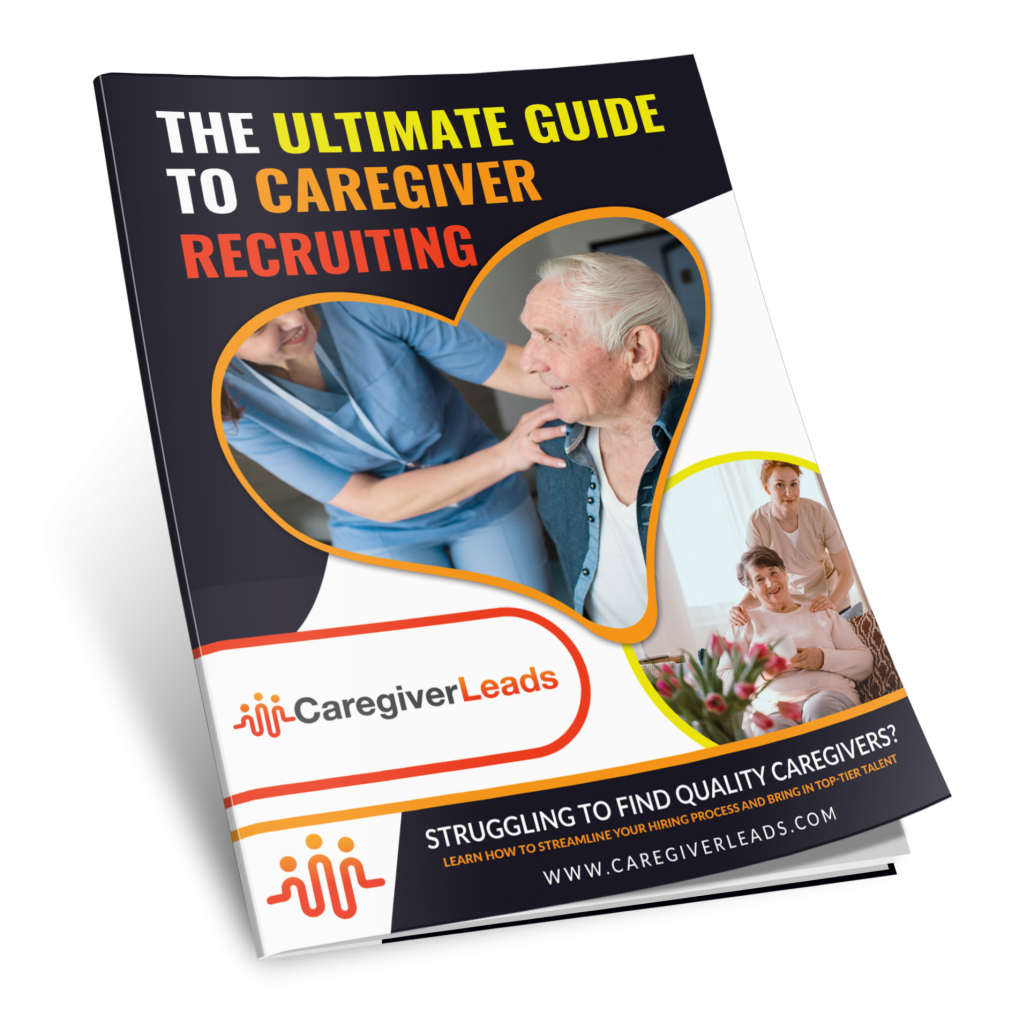The home care industry is expanding rapidly as families increasingly seek trusted caregivers for aging loved ones. This growth brings tremendous opportunities for caregiver agencies but also new challenges. One of the most pressing issues is the lack of a steady pipeline of applicants, which leads to hiring gaps, longer caregiver hiring times, and difficulty maintaining a reliable workforce.
When caregiver agencies cannot maintain consistent recruiting efforts, they risk losing qualified caregiver leads, experiencing delays in onboarding, and straining existing staff. To thrive in today’s competitive caregiving environment, agencies must focus on building a continuous flow of caregiver applicants, implementing automated lead nurturing, and improving their recruitment strategy.
A steady pipeline of caregiver leads ensures that agencies can respond promptly to client demand, reduce hiring delays, and sustain quality care for families relying on in-home support.
The Growing Demand for Skilled Caregivers and Its Impact on Recruitment
The demand for skilled caregivers has surged in recent years. Aging populations, longer life expectancy, and a preference for home-based care mean that more families are seeking qualified professionals. As a result, caregiver agencies face increasing pressure to recruit quickly and efficiently.
Without consistent caregiver recruitment efforts, agencies may struggle to fill open positions, resulting in overworked staff, service delays, and dissatisfied clients. Furthermore, skilled caregivers have more options today, so agencies that fail to maintain an active applicant pipeline risk losing top talent to competitors.
The need for caregiver agencies to develop a proactive strategy for managing caregiver leads is no longer optional; it is critical for sustaining growth and ensuring high-quality service.
How Hiring Gaps Affect Caregiver Agencies
When agencies lack a steady flow of caregiver applicants, several challenges arise:
- Extended caregiver hiring time: The recruitment cycle lengthens when there are insufficient applicants.
- Difficulty meeting client demand: Open positions may remain vacant, affecting the agency’s ability to provide timely care.
- Increased pressure on current staff: Existing caregivers may face higher workloads, leading to burnout.
- Reduced trust from families: Delayed service or insufficient staffing can erode client confidence.
- Higher turnover: Rushed hiring decisions can result in mismatches, ultimately causing more vacancies.
Maintaining a continuous pipeline of caregiver leads ensures that agencies can avoid these problems and stay ahead of industry demand.
Common Mistakes in Caregiver Recruitment
Even experienced caregiver agencies often make recruitment missteps that create hiring gaps. Some common mistakes include:
- Sporadic outreach: Posting job openings only occasionally leads to inconsistent applicant interest.
- Slow response to applicants: Delays in communication can cause skilled caregiver leads to lose interest.
- Neglecting follow-ups: Agencies that fail to maintain engagement risk losing potential hires.
- Relying solely on word-of-mouth: While referrals are helpful, they cannot provide a steady pipeline alone.
- Unclear job descriptions: Ambiguous postings can confuse applicants and reduce response rates.
Correcting these mistakes requires a strategic focus on caregiver recruitment, consistent engagement, and leveraging tools such as automated lead nurturing.
Why Inconsistent Recruiting Efforts Fail
Caregiver recruitment is a competitive field. Agencies that rely on irregular hiring practices often struggle to maintain an active pool of caregiver leads. One-time postings, delayed communication, and a lack of structured applicant follow-up can lead to:
- Missed opportunities to engage top talent.
- Disinterest from caregiver leads due to poor communication
- Longer caregiver hiring times
- Increased pressure on internal HR or recruitment teams
A successful caregiver recruitment strategy focuses on maintaining consistent outreach, nurturing leads, and providing a seamless hiring experience.
The Role of Automated Lead Nurturing in Faster Caregiver Hiring
Automated lead nurturing is a process that allows caregiver agencies to continuously engage caregiver leads through timely communication, reminders, and personalized follow-ups. This process offers several advantages:
- Reduces caregiver hiring time: Consistent engagement keeps leads interested and motivated to apply.
- Keeps leads warm: Caregiver applicants remain connected until they’re ready to move forward.
- Strengthens relationships: Agencies build trust with potential hires through ongoing communication.
- Encourages prompt application completion: Leads are more likely to submit applications quickly when nurtured.
By leveraging automated lead nurturing, agencies can create a reliable pipeline of caregiver applicants, minimizing hiring gaps and improving operational efficiency.
Strategies to Build a Reliable Caregiver Applicant Pipeline
Maintaining a steady stream of caregiver leads requires intentional strategies. Agencies can adopt the following approaches:
- Ongoing outreach: Engage potential caregivers continuously rather than waiting for vacancies.
- Automated nurturing campaigns: Regular messages, emails, and follow-ups keep applicants informed and interested.
- Clear, appealing job descriptions: Well-defined roles attract more qualified caregivers.
- Prompt applicant responses: Quick replies increase the likelihood of hiring top candidates.
- Positive candidate experience: A smooth, respectful hiring process encourages long-term commitment.
- Referral programs: Encourage current caregivers to refer skilled applicants, enhancing recruitment efforts.
- Regular pipeline review: Periodically assess the caregiver lead pool to identify gaps and opportunities.
By implementing these strategies, caregiver agencies can maintain a strong, active applicant pipeline ready for recruitment whenever needed.
How Lead Nurturing Supports Caregiver Retention
Lead nurturing does more than reduce hiring time it also positively impacts caregiver retention. Engaging applicants early builds trust, sets clear expectations, and reinforces the agency’s commitment to supportive workplace practices. When caregivers feel valued from the start, they are more likely to stay, reducing turnover and hiring costs.
Nurturing efforts might include:
- Sharing helpful information about the agency’s culture and training programs
- Providing updates about application status
- Offering tips for a successful onboarding experience
These touchpoints create a positive impression and ensure that caregiver leads remain invested in joining the agency.
Long-Term Benefits of Maintaining a Steady Pipeline
Building and sustaining a steady pipeline of caregiver applicants delivers long-term advantages for caregiver agencies:
- Faster interviewer scheduling: A strong pipeline means positions can be filled quickly.
- Consistent staffing levels: Reduced risk of service disruptions.
- Improved recruitment efficiency: Less time spent sourcing new candidates from scratch.
- More qualified applicants: Continuous engagement attracts skilled caregivers who align with agency needs.
- Reduced stress on staff: Managers can focus on quality rather than urgent hiring.
Investing in a consistent recruitment pipeline ensures that agencies are better prepared for future growth and market fluctuations.
Strengthen Your Caregiver Recruitment with Caregiver Leads
If your caregiver agency is facing hiring gaps, slow caregiver hiring, or difficulty engaging skilled applicants, it’s time to focus on maintaining a steady pipeline of caregiver leads.
Caregiver Leads provides resources and tools to help agencies nurture applicants, reduce hiring time, and build a reliable pool of caregivers ready to meet client needs.
Visit Caregiver Leads today to explore strategies for continuous recruitment and stronger applicant engagement.
Frequently Asked Questions (FAQs)
-
Why is a steady pipeline of caregiver applicants important?
A consistent flow of caregiver leads ensures agencies can hire quickly, avoid staffing shortages, and meet the growing demand for skilled caregivers.
-
What causes hiring gaps in caregiver agencies?
Hiring gaps often result from inconsistent recruiting efforts, irregular communication with caregiver leads, and delayed responses during the recruitment process.
-
How does automated lead nurturing support caregiver recruitment?
Automated nurturing keeps caregiver leads engaged with continuous communication, reminders, and information, helping to shorten caregiver hiring time.
-
Can building a pipeline of caregiver applicants improve retention?
Yes, early engagement and consistent communication foster trust, which increases long-term caregiver commitment.
-
What is the best way to reduce caregiver hiring time?
Focusing on continuous engagement, creating a steady pipeline of caregiver leads, and implementing efficient onboarding practices helps agencies hire faster and more effectively.



